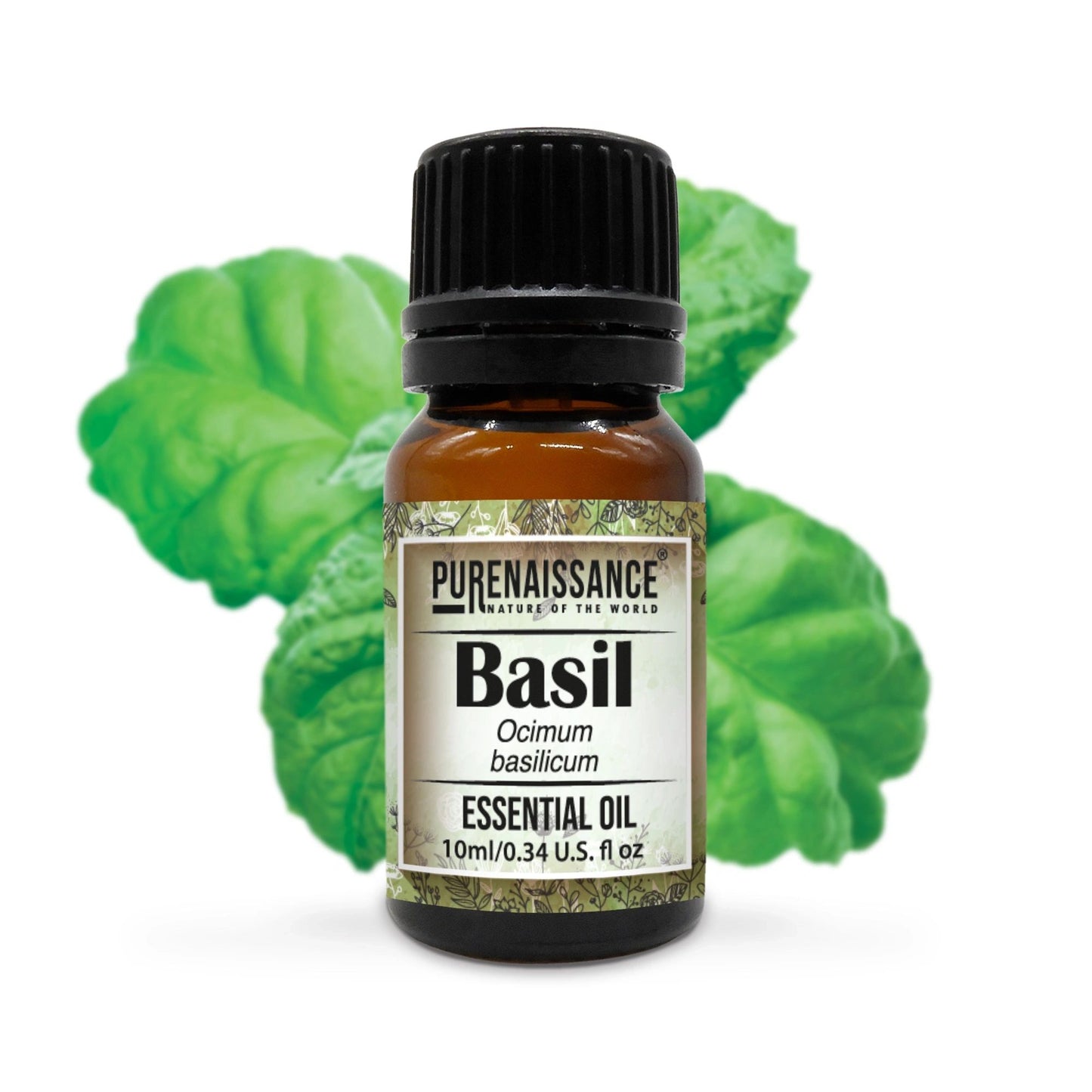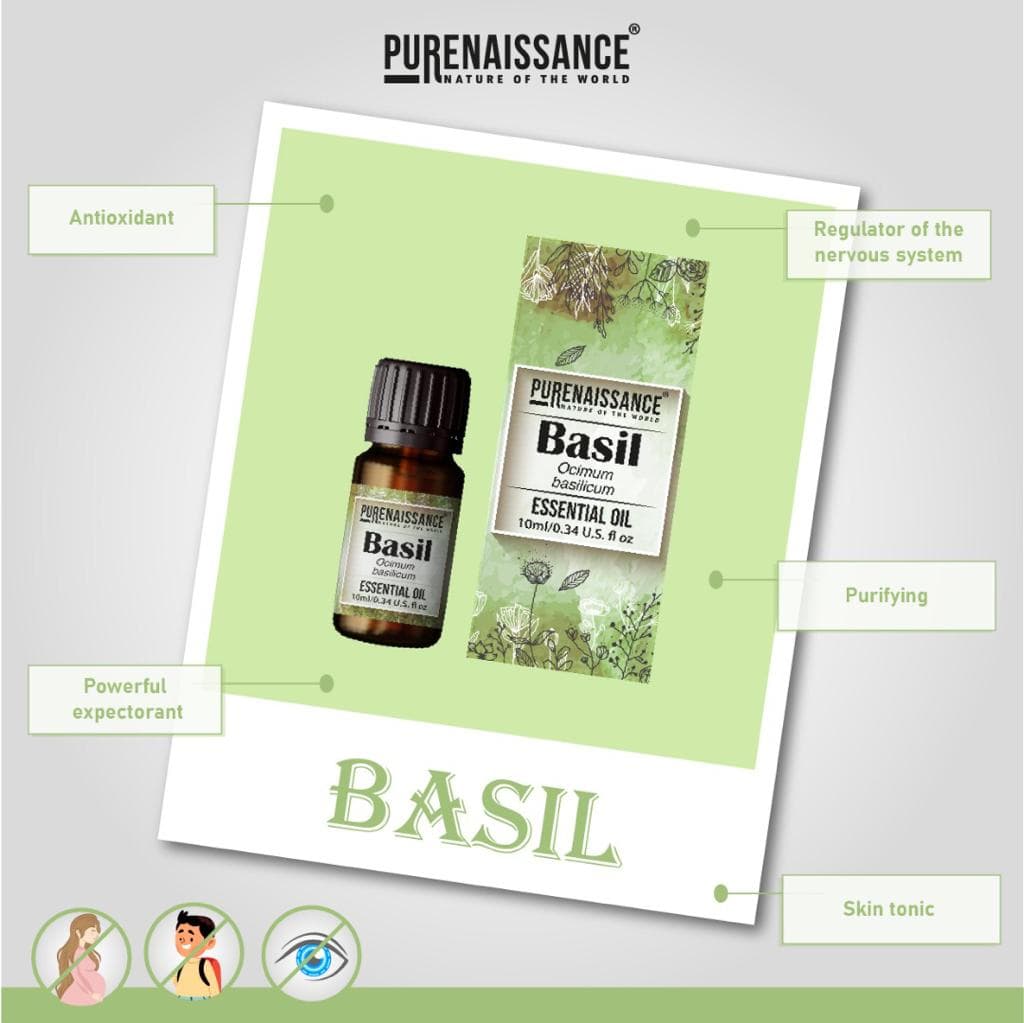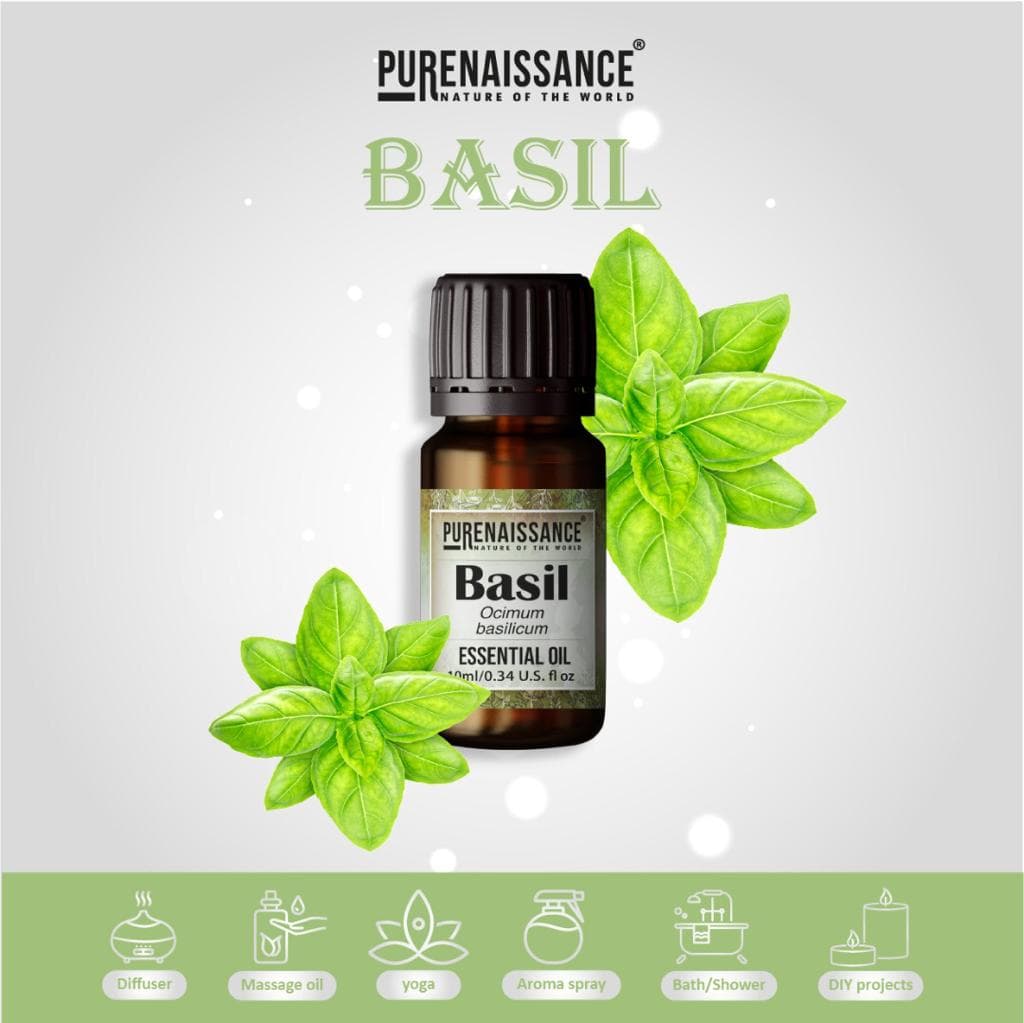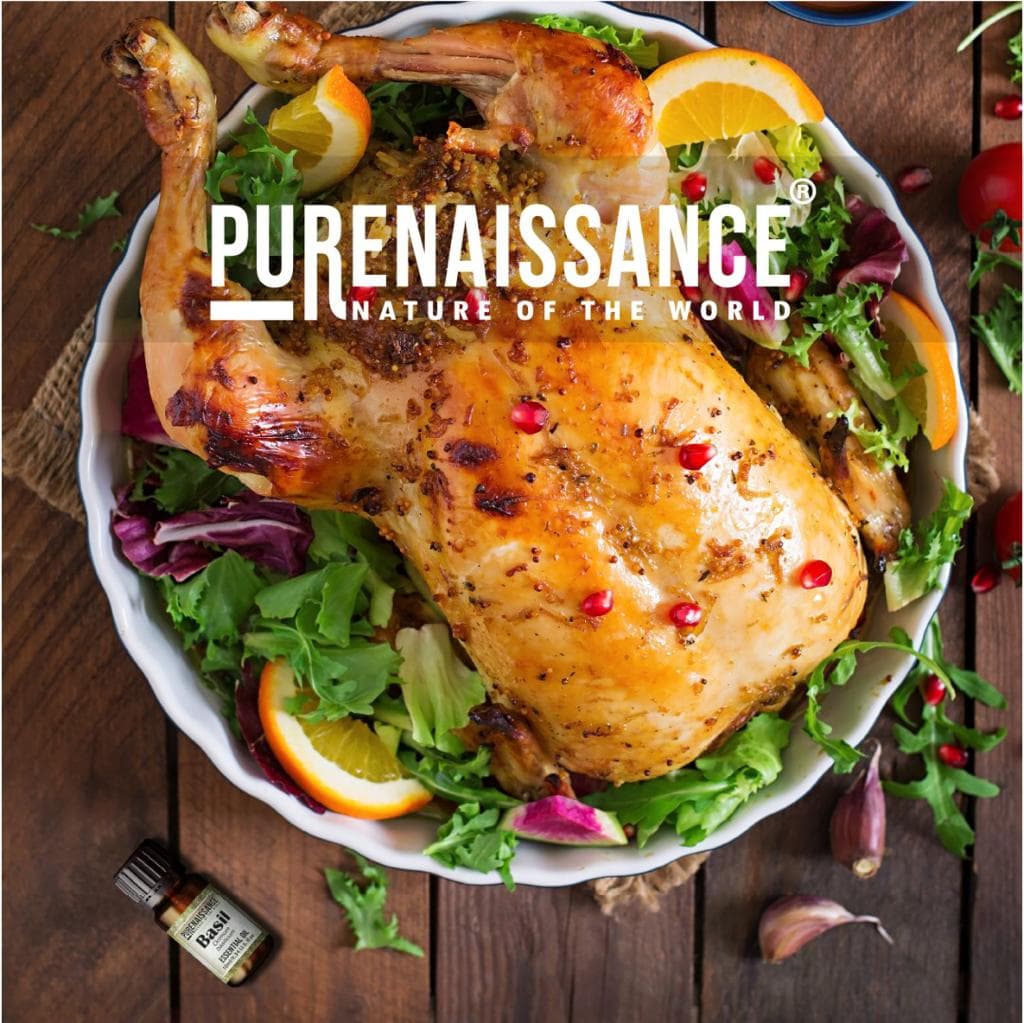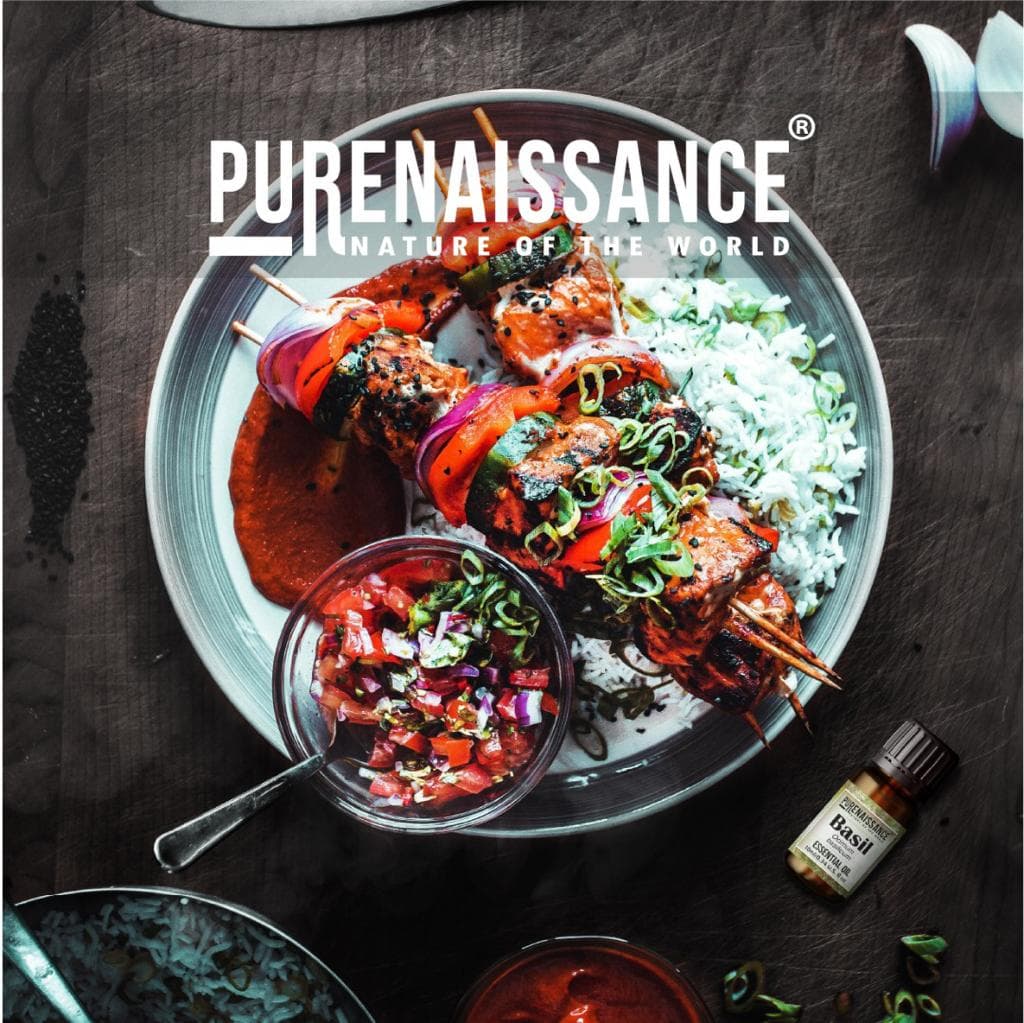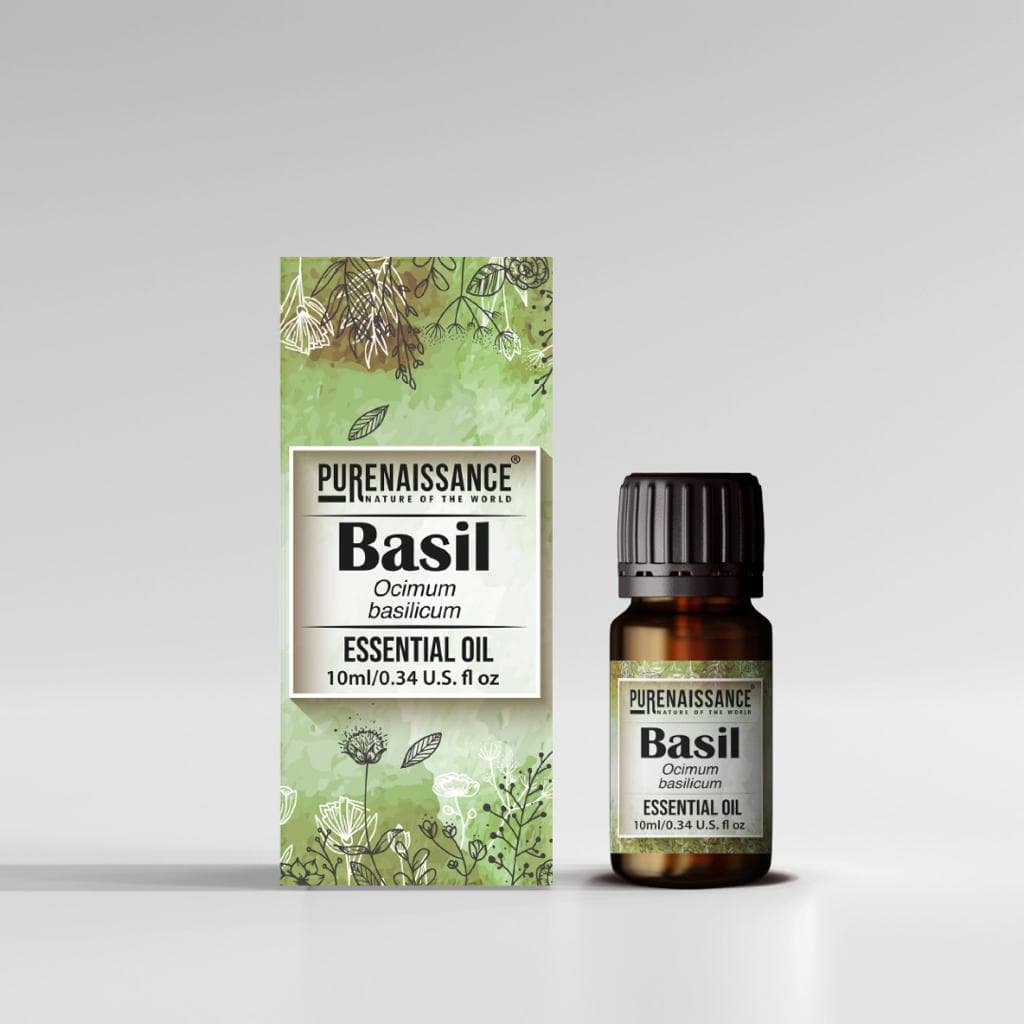Purenaissance
Pure Basil Essential Oil Purenaissance Therapeutic Grade, Best for Aromatherapy and Diffuser/10 ml
Pure Basil Essential Oil Purenaissance Therapeutic Grade, Best for Aromatherapy and Diffuser/10 ml
Couldn't load pickup availability
Product description: Sweet Basil is the most common and the most popular of basils. With its prolific bush full of large, dark green leaves, sweet basil lives up to its name in so many ways, not the least of which is its intoxicating aroma. Basil, commonly known as sweet basil, common basil, or even St. Josephwort, is also dubbed in France as ‘l’herbe royale’. Originally, the term "basil" meant a mythical snake whose eyes could kill the one who crosses it. From the fourteenth century, it also refers to this little spice, probably because it could appear on the table of kings. Originally from the center of Africa, it was domesticated in India and then distributed throughout Asia and brought to the West by the soldiers of Alexander the Great 300 years before our era. These multiple trips have encouraged the selection of hundreds of varieties in various parts of the world, which have specific characteristics and very different essential oils. Basil is a popular herb in European cooking, particularly Italian dishes. Its delightfully aromatic leaves reveal a wide variety of flavors from lemony, minty to cinnamon and even licorice. Even the leaves of the many different varieties are unique, the colors ranging from green to deep purple with smooth leaves or even crinkled leaves. To choose a good Basil essential oil, you must have in mind its optimal biochemical composition, its physical and organoleptic characteristics as well as some notions on its geographical exploitation. It takes 6 to 10 kg of flowering tops to produce 10 ml of essential oil. Common name: Large green basil, Sweet basil with linalool, Pistou Scientific name: Ocimum basilicum Appearance: mobile liquid Color: clear yellow Odor: fresh, spicy and slightly aniseed fragrance, licorice-like, slightly camphorous. Storage conditions: To avoid deterioration and protect the aromatic and therapeutic properties of your essential oil store them in amber or cobalt blue bottles. Dark glass such as amber or cobalt helps to keep out deteriorating sunlight. Botanical Family: Lamiaceae Organ: Flowering plant Processing Method: Steam distillation Type: 100% pure Origin: India Preferred uses: Dermal, oral, inhalation, diffusion Chemical composition: Main chemical compound: Monoterpenols (Linalol 50 to 55%) Other chemical compounds: Phenols (Eugenol 6 to 8%), Oxides (Cineole 7 to 10%), Monoterpenes, Sesquiterpenes Physical characteristics: A good basil essential oil must have the following physical characteristics: Density at 20 ° C: 0.930 to 0.960 Refractive index at 20 ° C: 1.490 to 1.520 Rotatory power at 20 ° C: -20 ° to + 5 ° Flash point: + 75 ° C Specific gravity at 200C: 0.905 - 0.955 Solubility in vegetable oils: Soluble Solubility in water: Insoluble Properties of the essential oil of basil large green: The properties of basil essential oil can be explained by the active compounds found in the leaves and flowers of Ocimum basilicum linaloliferum var. For health Antioxidant: The main antioxidant found in basil essential oil derives from rosmarinic acid. There are also phenolic acids and flavonoids that have antioxidant properties. Antispasmodic: Its wealth of methylchavicol makes essential oil of Basil a treatment of choice against spasmodic disorders (bloating, aerophagia, nausea, digestive spasms). Analgesic: Like other oils, essential oil of Basil decreases pain thanks to its concentration of linalool, a molecule responsible for the floral and fresh touch of its fragrance. Antifungal, antiviral and antibacterial: Its concentration of methylchavicol and linalool helps to strengthen the immune system, helps to destroy bad bacteria and has an antagonistic activity to that of intestinal worms. Powerful expectorant: Because of its high cineol content, it is able to increase the expulsion of mucus from the trachea or bronchi by expectoration or coughing. Rheumatic and arterial anti-inflammatory: Via linalool, the essential oil has an anti-inflammatory action. Insecticide: The constituents methylcinnamate, methylchavicol, ocimene, cineole and linalool exhibit recognized insecticidal activity. other oils, essential oil of Basil decreases pain thanks to its concentration of linalool, a molecule responsible for the floral and fresh touch of its fragrance. Antifungal, antiviral and antibacterial: Its concentration of methylchavicol and linalool helps to strengthen the immune system, helps to destroy bad bacteria and has an antagonistic activity to that of intestinal worms. Powerful expectorant: Because of its high cineol content, it is able to increase the expulsion of mucus from the trachea or bronchi by expectoration or coughing. Rheumatic and arterial anti-inflammatory: Via linalool, the essential oil has an anti-inflammatory action. Insecticide: The constituents methylcinnamate, methylchavicol, ocimene, cineole and linalool exhibit recognized insecticidal activity. Other properties: WELL-BEING Balancing Regulator of the nervous system Relaxing IN BEAUTY Antibacterial Antioxidant Purifying Skin tonic Indications of basil essential oil: Cutaneous application: Anxiety, arthritis, contracture and muscle tension, child's colitis, cramp, dysmenorrhea (painful periods), insomnia, headache, insect bite, allergic rhinitis, spasms and digestive disorders (flatulence, bloating, indigestion , transit difficulties), spasmophilia, overwork, spasmodic cough Respiratory (olfaction, inhalation, diffusion): Anxiety, asthenia, asthma, difficulty of concentration or memory, mental fatigue, motion sickness, nervousness, allergic rhinitis, spasmophilia, overwork, spasmodic cough, sleep disorders Internal route (oral, vaginal or rectal): burns and pain in the stomach, halitosis, hyperacidity, infections (viral, digestive or bacterial), motion sickness, painful periods, digestive disorders. Expert advice: The essential oil of basil is the great cure of the digestive problems. It is the antispasmodic and the natural digestive par excellence. Tips for using essential oil of basil for health: To take 1 to 2 times a day over a period of about 7 days, and until improvement. SKIN BENEFITS: Skin irritation caused by insect bites: drop a drop of basil essential oil on the affected area. URO-GENITAL BENEFITS: Painful rules: dilute to 20% in a vegetable oil, massage the lower abdomen. RESPIRATORY BENEFITS AND ENT (ear, nose, throat): Asthma: in olfaction or dilute to 20% in a vegetable oil and massage along the spine and the solar plexus. Allergic rhinitis: in olfaction or dilute to 20% in a vegetable oil to massage along the spine. Spasmodic cough: dilute to 20% in a vegetable oil and use in massage or olfaction. To refresh the breath (halitosis): practice a gargle with a drop of essential oil in a bottom of water agitated with a spoon. Clogged nose: keep 1 drop of essential oil between the tongue and the palate, then hold the tongue against the palate. DIGESTIVE BENEFITS Colitis children, spasms: dilute to 20% with a vegetable oil, massage the belly. Motion sickness: in olfaction or internally after medical consultation. Digestive disorders: drop a drop on the tongue, after consulting a doctor. Digestive infection: internally, after medical consultation. MUSCULAR AND ARTICULAR BENEFITS Arthritis, contracture and muscle tension, cramp: dilute to 20% in a vegetable oil and massage the painful area. OTHER BENEFITS Migraine and headache: pour a few drops diluted in a tablespoon of vegetable oil to massage the temples and the back of the neck. Tips for using basil essential oil for psychological well-being: Fatigue: dilute to 20% in a vegetable oil, massage the lower back. Nerve tension: pour into the bath water 10 drops diluted in milk or dispersed in milk powder. Lack of concentration: inspire the essential oil. In cutaneous application, diluted preferably, on the wrists and the solar plexus. In broadcast, several times a week. Anxiety or insomnia: Mix 5 drops of basil essential oil with 7 drops of sweet orange essential oil in 1 tablespoon of vegetable oil and massage the areas of tension as well as the arch of the plant until improvement. Tips for using essential oil of basil for beauty: Skin problems: apply a drop of pure essential oil of basil on the area to be treated (do not spread on the face). Skin tone: dilute a drop of essential oil in a day cream and apply on the skin avoiding the eye area. Hair loss: in dermal application diluted in a shampoo. To fight against infections and promote well-being (anxiety, anxiety, depression, fatigue ...), choose one of the following methods of dissemination: Diffusion by nebulization: These diffusers, which propel the essential oil by a pump, are the most effective, but their price is generally high and they can be more or less noisy. Ultrasonic diffusion (misting): Less powerful, these diffusers remain effective to benefit from the effects of the essential oil in closed rooms. Diffusion by gentle heat: Pour a few drops of essential oil into the small receptacle of these diffusers. Under the effect of heat, volatile aromatic particles will mingle with the atmosphere. To use ideally in a small closed room. Synergies with basil essential oil: With cumin, tarragon, fennel, cardamom and peppermint, in cases of difficult digestion. With black spruce, ravintsara, rockrose, fragonia, for the immune system. With wintergreen, lemon eucalyptus, katrafay, against joint pain. With tea-tree, manuka, rosemary with verbenone, against acne. Precautions and contraindications of essential oil of basil: Women can not use basil essential oil for the first three months of pregnancy or while breastfeeding. It is also not recommended for children under the age of 6. Essential oil of basil can irritate sensitive skin and must be tested beforehand in the crook of the elbow. Do not use the pure essential oil on the skin, always dilute it to 20% in a vegetable oil and always at a distance from the eyes. The green basil essential oil should not be used at high dose or repeated because it is hepatotoxic. The green basil essential oil can be used as part of a culinary preparation, respecting the proper process and dosage. This is one of the indications that distinguishes tall green basil from tropical basil. Caution: The properties and indications mentioned in this sheet are based on a set of research that presents a traditional use of essential oil, recognized by experts in aromatherapy. Nevertheless, it is still recommended for the use of essential oils to go to an aromatherapy professional to collect personalized and secure information, adapted to your medical situation, your profile and your age.
Share
